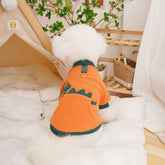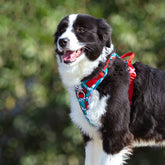The Reality of Owning More Than Two Dogs: Are You Up for the Challenge?
Table of Contents
- Key Highlights:
- Introduction
- The Joy of Canine Companionship
- Understanding the Commitment
- The Financial Aspect
- Space and Environment Considerations
- Social Dynamics Among Dogs
- Time Management and Lifestyle Impact
- Training and Behavioral Challenges
- The Emotional Rewards
Key Highlights:
- Owning more than two dogs can enhance joy and companionship, but it significantly increases responsibility in terms of time, finances, and training.
- Space considerations and understanding social dynamics among canines are crucial for a harmonious multi-dog household.
- Despite the challenges, the emotional rewards of having multiple dogs often outweigh the burdens for dedicated and prepared owners.
Introduction
For many dog lovers, owning a dog is a deeply rewarding experience, filled with affection and companionship. The unconditional love and loyalty that dogs provide can brighten any day. Yet, as the number of furry companions increases, so too do the responsibilities associated with dog ownership. Specifically, those pondering the prospect of having more than two dogs must weigh the joyful aspects against the complexities that arise. Is the additional affection worth the extra work? This article explores the multifaceted nature of owning more than two dogs, shedding light on the commitment required and the rewards that can await dedicated owners.
The Joy of Canine Companionship
Dogs are often referred to as "man's best friend" for a reason. Their loyalty and ability to provide emotional support enrich our lives in ways that few other relationships can. The experience of coming home to a wagging tail or cuddling on the couch can melt away the stresses of daily life. For many, the prospect of having multiple dogs is enticing, as the influx of love can multiply with each new addition.
Consider families who adopt significant numbers of dogs, often describing the household as a vibrant, lively environment filled with the sounds of playful barks and wagging tails. The joy of companionship can indeed amplify, but potential owners must remember that each dog adds to the household's fabric, complicating the dynamics, both positively and negatively.
Understanding the Commitment
As much as the idea of expanding a dog family may seem appealing, it entails a commitment that cannot be overstated. Beyond the fun and frolic lies the hard truth: Dogs are living creatures that depend on their owners for care, attention, and stability.
With each additional dog comes a need for proper attention; feeding, socialization, grooming, and vet visits all take up a considerable portion of an owner's time. For instance, an owner of three dogs may find themselves dedicating a significantly larger portion of their day to walking, training, and general care, compared to someone with just one or two. Hence, prospective multi-dog owners must ask themselves candidly: Are you able and willing to juggle the needs of multiple canines on a daily basis?
The Financial Aspect
Financial readiness plays a critical role in the decision to adopt more than two dogs. Each dog's expenses accumulate quickly, encompassing food, grooming, veterinary care, and a litany of miscellaneous costs such as toys and training supplies. When one considers vaccinations and ongoing health care, the financial burden of an expanding pet family can become daunting.
For instance, pet insurance can offer peace of mind but also adds to monthly expenditures. According to recent statistics, the average annual cost per dog can range from $500 to over $1,500, depending on the breed and health needs. Therefore, before expanding your dog family, a thorough evaluation of your financial situation is essential. Are you prepared to not only provide a loving home but also a sustainable financial environment for your furry friends?
Space and Environment Considerations
The physical living environment is another fundamental factor when contemplating the addition of more dogs. A small apartment may be manageable for one or two dogs but can quickly become chaotic with additional pets vying for space. Even the most affectionate owner can feel overwhelmed if their living area is tight, impacting both the pets and their stress levels.
The spatial needs of dogs should be taken into consideration. Dogs require room to play, sleep, and roam comfortably. Effective introductions to new family members can also hinge on space—having an adequately sized area can make the transition smoother and reduce territorial disputes among the dogs. An ideal environment promotes a balanced household where each dog has the freedom to express themselves without the constraints of overcrowding.
Social Dynamics Among Dogs
When introducing a new dog into an existing pack, owners may encounter complex social dynamics. Dogs are inherently social animals, and the interactions between them can lead to both enriching bonds and potential conflicts. Jealousy may arise in some dogs when they sense that they are no longer the sole focus of their owner's affection, making the initial meetings between pets a critical juncture in forming a harmonious multi-dog family.
Understanding and managing these dynamics requires vigilance and patience. Watchful observation of interactions can inform an owner's response—if disputes arise, essential interventions may help maintain peace and foster friendships over time. For example, initial introductions can be facilitated through neutral ground walks or gradual introductions in controlled settings. The process of establishing a peaceful multi-dog household is not instantaneous and often requires strategic teamwork among owners.
Time Management and Lifestyle Impact
The logistics of owning multiple dogs necessitate a reevaluation of personal schedules and lifestyle. While dog ownership typically demands time, the level of commitment increases significantly with a greater number of canines. Daily exercises, training sessions, feeding routines, and medical appointments all require additional planning.
Furthermore, the presence of more than two dogs can markedly influence social life. Spontaneous trips may need to be replaced with more structured, dog-friendly vacations, as well as increased lead time for arranging care with trusted pet sitters or boarding facilities. For busy individuals who already juggle demanding careers and personal responsibilities, incorporating time for a larger pack can tip the balance towards overwhelming rather than joyous.
Training and Behavioral Challenges
The training of multiple dogs presents a unique set of hurdles. Each dog brings its personality and needs, requiring tailored approaches to training and behavior management. Owners may find themselves navigating a myriad of techniques for different pets; what works for one dog may not resonate with another.
Moreover, behavioral issues may emerge more prominently in multi-dog households. Understanding each dog's specific quirks and training challenges is paramount. Behaviors such as barking, digging, or aggression can become magnified in a group setting. Thus, owners must be prepared to dedicate time not just for basic training but also for behavioral training as a collective effort to promote a harmonious home.
The Emotional Rewards
Despite the multitude of challenges associated with owning more than two dogs, many find that the emotional rewards are unparalleled. The joy of watching dogs play together, form their unique friendships, and offer companionship can provide a sense of fulfillment that transcends the responsibilities involved.
The bonds formed within a multi-dog household can create a joyful atmosphere. For instance, families that own multiple dogs often experience moments of laughter and warmth, where interactions among the pets become a source of joy and entertainment. The sense of community, both among the dogs and the family, enriches experiences and deepens connections.
In summary, the decision to own more than two dogs is one that brings considerable joy along with significant responsibility. Those who are willing to embrace the challenge may find that the rewards are both plentiful and enriching, ultimately crafting a lively and loving home.
FAQ
1. What are some tips for introducing a new dog to an existing pack?
When introducing a new dog, always start on neutral territory. Arrange a group walk or brief meeting outside. Monitor their interactions closely to gauge compatibility, and allow both dogs to establish their own space to prevent territorial disputes.
2. How can I manage the financial costs associated with multiple dogs?
Creating a budget specific to pet expenses is essential. Consider bulk buying food and supplies, and look into insurance options to mitigate sudden veterinary costs. Setting aside a pet emergency fund can also alleviate financial stress.
3. How do I ensure proper training for multiple dogs?
Individualized training sessions can help address each dog’s unique needs. Group training classes can also be beneficial, and employing a consistent command structure fosters a supportive environment for learning. Remember to use positive reinforcement techniques to encourage good behaviors.
4. What is the ideal living environment for multiple dogs?
An ideal living environment has ample space for each dog to play, move freely, and have their sleeping quarters. A safely fenced yard or close proximity to dog parks can significantly enhance their lives, providing additional outlets for their energy.
5. What are the potential behavioral issues I should monitor in a multi-dog household?
Common issues include jealousy, resource guarding, or territorial behavior. Keeping a close eye during interactions and managing shared resources like food, toys, and space can counteract these behaviors effectively.
6. Are there any specific breeds that are easier to manage in multi-dog settings?
Certain breeds tend to exhibit social traits that may lend themselves better to multi-dog environments. Breeds such as Labrador Retrievers, Golden Retrievers, and Beagles are often regarded as more adaptable and friendly with other pets, but individual temperament always varies.





